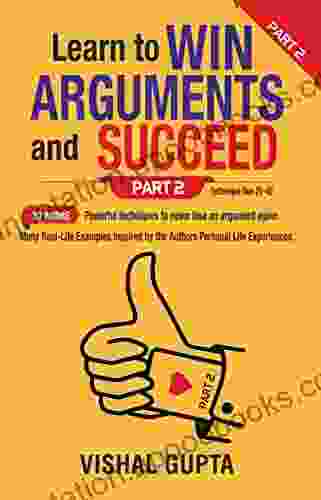Flipped Learning For Math Instruction: The Ultimate Guide to Revolutionizing Math Education

In today's rapidly evolving educational landscape, where students are increasingly digital natives and technology permeates every aspect of our lives, it is imperative to rethink traditional teaching methods and embrace innovative approaches that cater to the needs of 21st-century learners. Flipped learning, a revolutionary instructional model, has emerged as a transformative force in math education, offering a multitude of benefits for both students and teachers alike.
This comprehensive guide will delve into the world of flipped learning for math instruction, exploring its pedagogical foundations, practical implementation strategies, and empirical evidence supporting its effectiveness. Whether you are a seasoned educator seeking to enhance your teaching practices or a novice teacher looking to implement innovative and engaging approaches, this guide will provide you with the knowledge and tools you need to successfully implement flipped learning in your math classroom.
4.4 out of 5
| Language | : | English |
| File size | : | 1586 KB |
| Text-to-Speech | : | Enabled |
| Enhanced typesetting | : | Enabled |
| Word Wise | : | Enabled |
| Print length | : | 72 pages |
| Screen Reader | : | Supported |
What is Flipped Learning?
Flipped learning, also known as the inverted classroom model, is a pedagogical approach that reverses the traditional roles of teacher and student. In a flipped classroom, students are initially introduced to new concepts through pre-recorded video lectures, online readings, or other digital resources outside of class time. This allows them to learn at their own pace, rewind and replay as needed, and access the material as many times as they need to fully understand the concepts.
During class time, students engage in active learning activities that reinforce and apply the knowledge they have gained outside of class. They may engage in problem-solving, collaborative projects, simulations, or discussions, with the teacher acting as a facilitator and guide rather than a traditional lecturer. This shift in focus from passive learning to active learning promotes higher-Free Download thinking skills, encourages collaboration, and fosters a more student-centered and engaging learning environment.
Benefits of Flipped Learning for Math Instruction
Flipped learning offers a myriad of benefits for math instruction, including:
- Increased student engagement and motivation: By providing students with the flexibility to learn at their own pace and access the material multiple times, flipped learning allows them to take ownership of their learning and become more engaged in the process. Active learning activities during class time further enhance engagement and motivation, as students are able to apply their knowledge and collaborate with their peers.
- Personalized learning: Flipped learning enables teachers to tailor instruction to the individual needs of each student. Students can access the pre-recorded lectures at their own pace, and teachers can provide targeted support and differentiation during class time based on students' understanding of the material.
- Improved understanding and retention: By providing students with multiple opportunities to interact with the material, flipped learning promotes deeper understanding and retention. Students can revisit the pre-recorded lectures as needed, and active learning activities reinforce the concepts and help students make connections between different ideas.
- Increased time for higher-Free Download thinking skills: By freeing up class time from traditional lecturing, flipped learning allows teachers to allocate more time to activities that promote higher-Free Download thinking skills, such as problem-solving, critical thinking, and analytical reasoning.
- Improved student-teacher relationships: In a flipped classroom, the teacher is more available to provide individualized support and guidance to students during class time. This fosters stronger student-teacher relationships and creates a more supportive and collaborative learning environment.
Practical Implementation Strategies
To successfully implement flipped learning in your math classroom, it is important to consider the following practical strategies:
- Plan carefully: Begin by carefully planning the structure and content of your flipped lessons. Determine which concepts are most suitable for flipping and identify the appropriate digital resources or activities to use.
- Create engaging pre-recorded lectures: The pre-recorded lectures are a critical component of flipped learning. Make sure they are concise, clear, and visually engaging. Use a variety of multimedia elements, such as videos, animations, and interactive simulations, to keep students interested and motivated.
- Design meaningful active learning activities: The in-class active learning activities are essential for reinforcing and applying the knowledge gained outside of class. Choose activities that are engaging, collaborative, and promote higher-Free Download thinking skills.
- Provide ongoing support and feedback: Regularly check in with students to assess their understanding and provide personalized feedback. Use online discussion boards, formative assessments, or one-on-one conferences to provide support and guidance.
- Use technology effectively: Leverage technology to enhance the flipped learning experience. Use video conferencing tools for synchronous online discussions, online platforms for asynchronous communication, and educational software for interactive simulations and problem-solving activities.
Empirical Evidence Supporting Flipped Learning
Numerous empirical studies have demonstrated the effectiveness of flipped learning for math instruction. A meta-analysis of 41 studies found that flipped learning had a positive impact on student achievement in mathematics, with a mean effect size of 0.81.
One study, conducted by researchers at the University of California, Berkeley, found that students in a flipped math classroom outperformed students in a traditional lecture-based classroom on a standardized math test. The flipped classroom students also reported higher levels of self-efficacy and motivation.
Another study, published in the Journal of Educational Psychology, found that flipped learning helped students develop a deeper understanding of mathematical concepts and improved their problem-solving skills. The study also found that flipped learning fostered a more positive and collaborative learning environment.
Flipped learning is a transformative pedagogical approach that has the power to revolutionize math instruction. By providing students with the flexibility to learn at their own pace, access the material multiple times, and engage in active learning activities during class time, flipped learning promotes deeper understanding, increased engagement, and improved problem-solving skills.
If you are looking for a way to revitalize your math instruction and create a more engaging and student-centered learning environment, flipped learning is the perfect solution. This comprehensive guide has provided you with the knowledge and tools you need to successfully implement flipped learning in your classroom and reap its many benefits.
Unlock the potential of your students and transform the way math is taught and learned with flipped learning. Embrace the future of education and join the growing number of educators who are revolutionizing math instruction through this innovative approach.
4.4 out of 5
| Language | : | English |
| File size | : | 1586 KB |
| Text-to-Speech | : | Enabled |
| Enhanced typesetting | : | Enabled |
| Word Wise | : | Enabled |
| Print length | : | 72 pages |
| Screen Reader | : | Supported |
Do you want to contribute by writing guest posts on this blog?
Please contact us and send us a resume of previous articles that you have written.
 Book
Book Novel
Novel Page
Page Chapter
Chapter Text
Text Story
Story Genre
Genre Reader
Reader Library
Library Paperback
Paperback E-book
E-book Magazine
Magazine Newspaper
Newspaper Paragraph
Paragraph Sentence
Sentence Bookmark
Bookmark Shelf
Shelf Glossary
Glossary Bibliography
Bibliography Foreword
Foreword Preface
Preface Synopsis
Synopsis Annotation
Annotation Footnote
Footnote Manuscript
Manuscript Scroll
Scroll Codex
Codex Tome
Tome Bestseller
Bestseller Classics
Classics Library card
Library card Narrative
Narrative Biography
Biography Autobiography
Autobiography Memoir
Memoir Reference
Reference Encyclopedia
Encyclopedia Chuck Mcgill
Chuck Mcgill Christopher Paul
Christopher Paul Clark Kimberling
Clark Kimberling Chris Walter
Chris Walter Susan Gabriel
Susan Gabriel Lori Cluff Schade Phd Lmft
Lori Cluff Schade Phd Lmft Liza Mundy
Liza Mundy David P Devenney
David P Devenney Chris Sorensen
Chris Sorensen Christoph Faschinger
Christoph Faschinger Frank Worrall
Frank Worrall Monique Dillard
Monique Dillard Ramakant Dash
Ramakant Dash Chelsea Falin
Chelsea Falin Christian Scholl
Christian Scholl Chuck Barrett
Chuck Barrett Claudia Botterweg
Claudia Botterweg Christof Weber
Christof Weber Clara Wils
Clara Wils Chrissie Walsh
Chrissie Walsh
Light bulbAdvertise smarter! Our strategic ad space ensures maximum exposure. Reserve your spot today!

 Camden Mitchell"Threads of the Past": Unraveling the Intricate Web of History and Identity
Camden Mitchell"Threads of the Past": Unraveling the Intricate Web of History and Identity Donald WardFollow ·19.2k
Donald WardFollow ·19.2k Dillon HayesFollow ·4.2k
Dillon HayesFollow ·4.2k Marvin HayesFollow ·18.1k
Marvin HayesFollow ·18.1k Quincy WardFollow ·19k
Quincy WardFollow ·19k George MartinFollow ·8.9k
George MartinFollow ·8.9k Bob CooperFollow ·9.1k
Bob CooperFollow ·9.1k Francisco CoxFollow ·9.8k
Francisco CoxFollow ·9.8k Jacob FosterFollow ·11.2k
Jacob FosterFollow ·11.2k

 Kevin Turner
Kevin TurnerDive into the Enchanting World of "Crazy Like Fox": A...
Prepare yourself for a literary adventure...

 Ralph Waldo Emerson
Ralph Waldo EmersonUnlock the Elegance of Daffodil Lace: An Immersive Guide...
: A Tapestry of Delicate...

 Gerald Parker
Gerald ParkerNever Lose An Argument Again: 20 Powerful Techniques From...
Are you tired of losing...

 Xavier Bell
Xavier BellSeven Animal Insertions Filet Crochet Pattern: Embark on...
Welcome to the captivating...

 Eugene Powell
Eugene PowellMagomago in TDS Magomago 12: An Unforgettable Adventure...
Step into the Enchanting World of...

 Marvin Hayes
Marvin HayesSoft Felting Needle Holder Excellence In Reborn Artistry
Unveiling the Secrets of the...
4.4 out of 5
| Language | : | English |
| File size | : | 1586 KB |
| Text-to-Speech | : | Enabled |
| Enhanced typesetting | : | Enabled |
| Word Wise | : | Enabled |
| Print length | : | 72 pages |
| Screen Reader | : | Supported |










